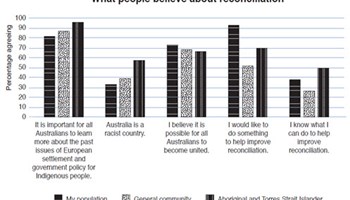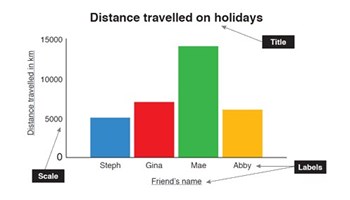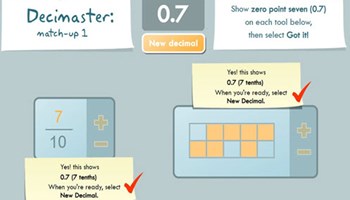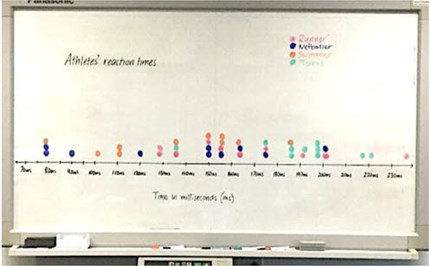Please note: This site contains links to websites not controlled by the Australian Government or ESA. More information here.
reSolve: Authentic Problems: Reaction Time
This sequence of four lessons focuses on collecting data and working with decimal numbers in the context of students measuring reaction times. Students formulate and refine an authentic inquiry question related to their own statistical investigation, and plan how to investigate it. They compare and order decimals that represent very fast and precise reaction times. They construct data displays, including dot plots, appropriate for the data, and justify their conclusions. Each lesson is outlined in detail including curriculum links, vocabulary, materials needed, sample answers, discussion points and student resources. This sequence is part of the reSolve: Mathematics by Inquiry special topic 'Authentic Problems'.
Additional details |
|
| Year level(s) | Year 5 |
|---|---|
| Audience | Teacher |
| Purpose | Teaching resource |
| Format | Downloadable resources |
| Teaching strategies and pedagogical approaches | Mathematics investigation |
| Keywords | research questions, place value, data representation, decimals, maths investigations |
Curriculum alignment |
|
| Curriculum connections | Numeracy |
| Strand and focus | Number, Statistics, Build understanding, Apply understanding |
| Topics | Decimals, Data representation and interpretation |
| AC: Mathematics (V9.0) content descriptions |
AC9M5N01
Interpret, compare and order numbers with more than 2 decimal places, including numbers greater than one, using place value understanding; represent these on a number line
AC9M5ST03
Plan and conduct statistical investigations by posing questions or identifying a problem and collecting relevant data; choose appropriate displays and interpret the data; communicate findings within the context of the investigation
AC9M5ST01
Acquire, validate and represent data for nominal and ordinal categorical and discrete numerical variables to address a question of interest or purpose using software including spreadsheets; discuss and report on data distributions in terms of highest frequency (mode) and shape, in the context of the data |
| Numeracy progression |
Number and place value (P8)
Interpreting and representing data (P4) |
Copyright details |
|
| Organisation | reSolve Maths by Inquiry |
| Copyright | © Australian Government Department of Education, Skills and Employment 2021. Creative Commons BY-NC-SA 4.0. |
Related resources
-

reSolve: Reconciliation Data
An inquiry-based lesson exploring data in the context of the Reconciliation Barometer report.
Resource details -

reSolve: Data: Making Decisions
A sequence of lessons to teach about data collection and representation.
Resource details -

Career profile: Sacha Dench, Migratory animal research scientist
This career profile on Sacha Dench, a migratory animal research scientist, demonstrates the intersection of science and mathematics knowledge and skills in a real-world context.
Resource details -

Fractions, decimals and percentages: Year 5 – planning tool
This planning resource for Year 5 is for the topic of Fractions, decimals and percentages.
Resource details
